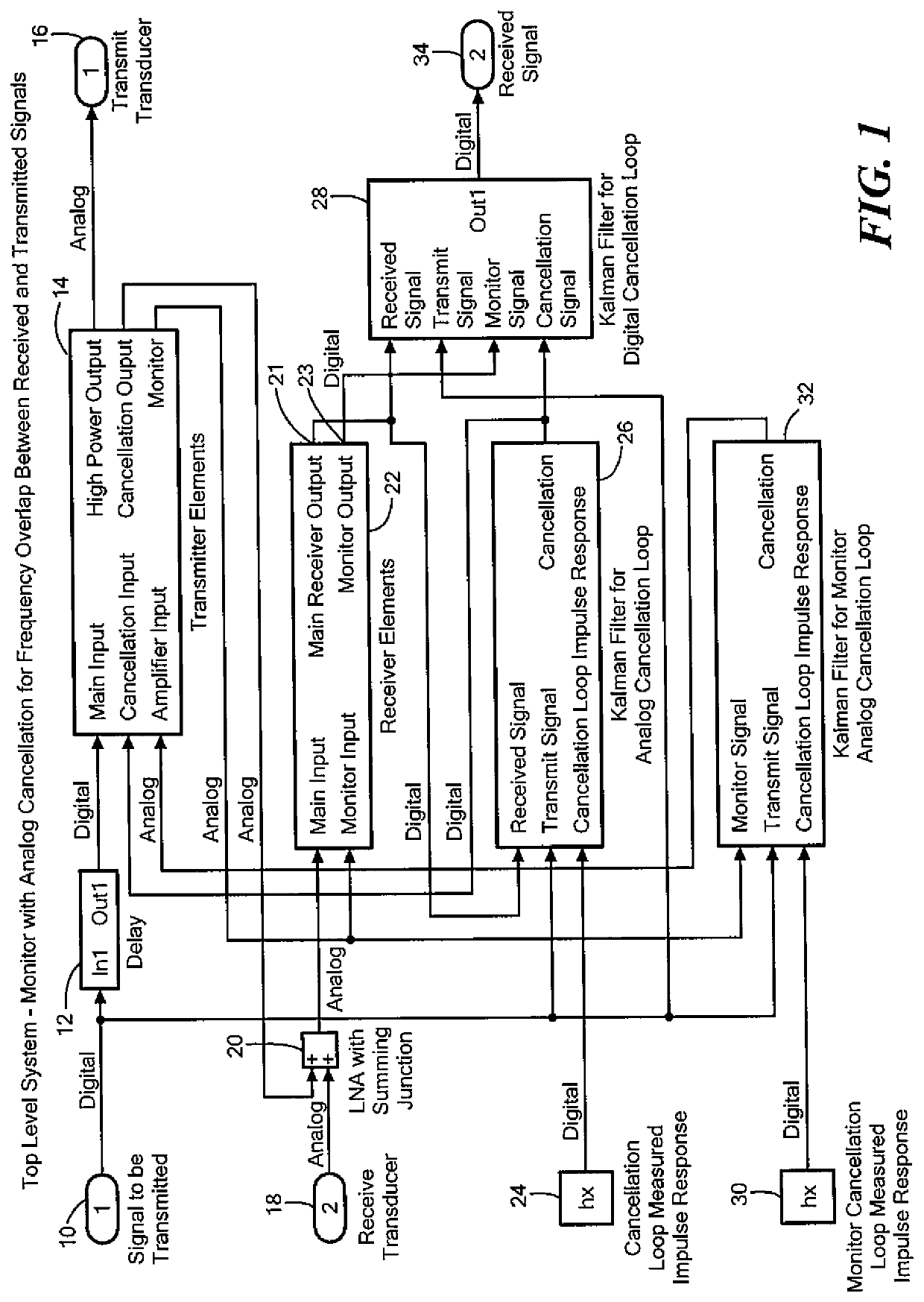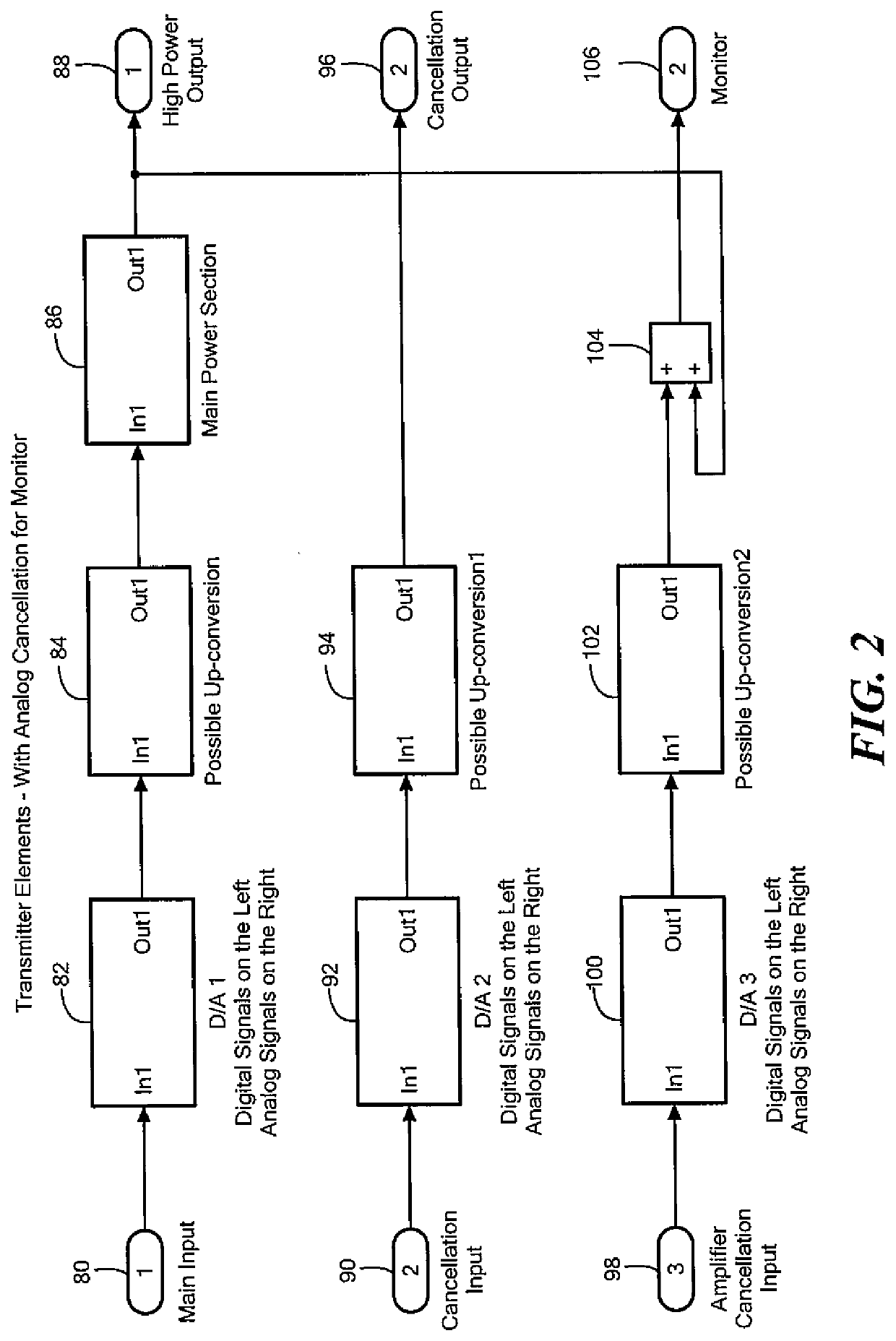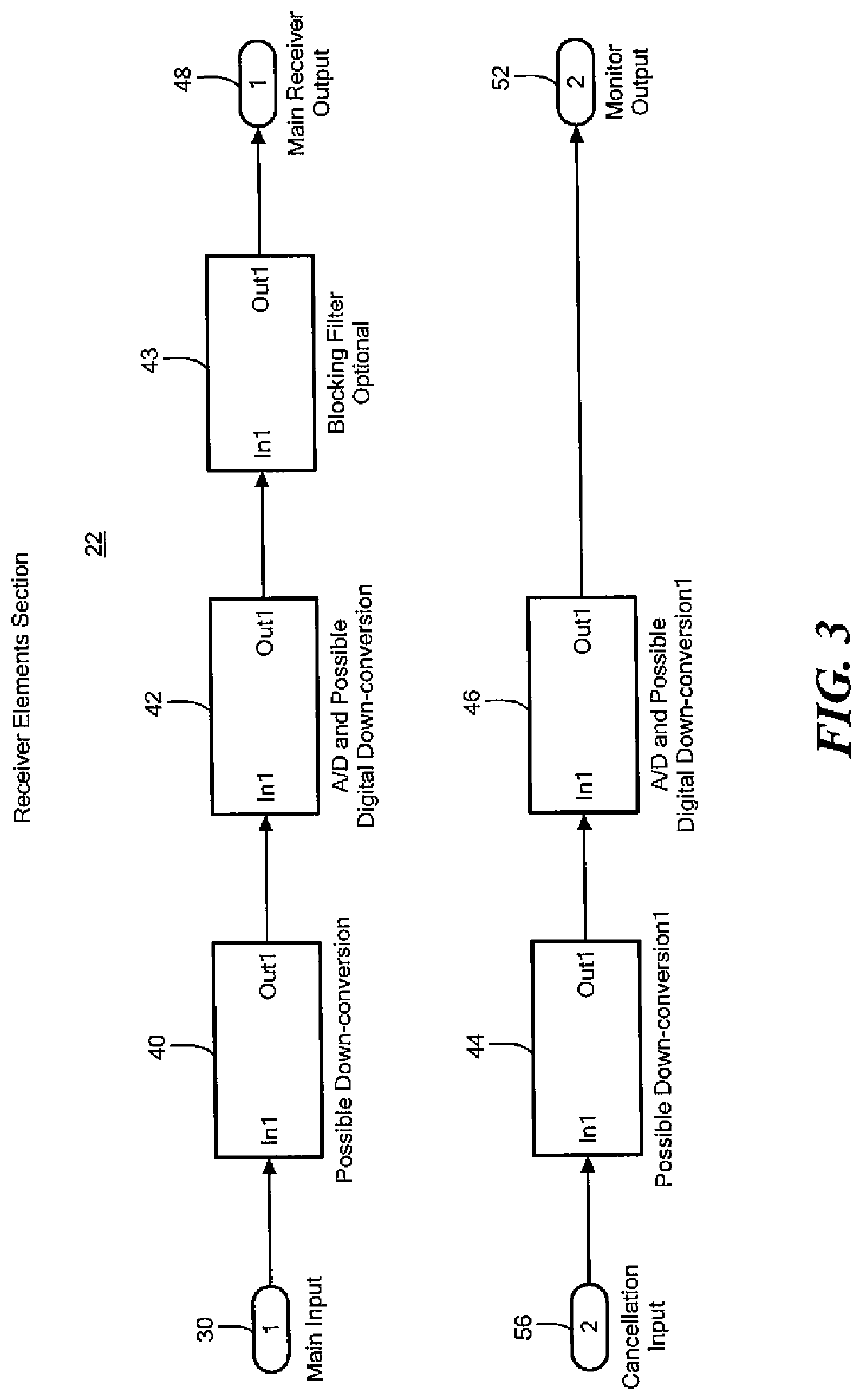Acoustic and RF cancellation systems and methods
a technology of acoustic and rf, applied in the field of communication, acoustic and radio measurement, can solve the problems of inability to keep up with the changing environment of the wave, inability to optimal adapt to the wave environment, and difficulty in implementation
- Summary
- Abstract
- Description
- Claims
- Application Information
AI Technical Summary
Benefits of technology
Problems solved by technology
Method used
Image
Examples
Embodiment Construction
[0040]The exemplary circuitry of FIGS. 1-6 is described as follows. Signal input 10 is the digital signal for transmission. A blocking filter, which is optional, may include a digital filter that ensures that the signal to be transmitted contains no frequencies outside the ranges allocated for a particular system. The source may already be clean enough to omit this bock. Delay 12 provides for analog cancellation. See PCT / US2016 / 037243.
[0041]The transmitter elements 14 are the digital inputs for the main transmission and cancellation signals. These signals are converted to analog. Depending on frequency of use, there may be analog up-conversion (mixers). The high power output contains the appropriate amplifier and impedance matching to produce an analog output for the transmit transducer. High power typically means more than just carrying signal but this might still only be in the milliWatt region). Appropriate filtering and buffering are provided for the analog cancellation output. ...
PUM
 Login to View More
Login to View More Abstract
Description
Claims
Application Information
 Login to View More
Login to View More - R&D
- Intellectual Property
- Life Sciences
- Materials
- Tech Scout
- Unparalleled Data Quality
- Higher Quality Content
- 60% Fewer Hallucinations
Browse by: Latest US Patents, China's latest patents, Technical Efficacy Thesaurus, Application Domain, Technology Topic, Popular Technical Reports.
© 2025 PatSnap. All rights reserved.Legal|Privacy policy|Modern Slavery Act Transparency Statement|Sitemap|About US| Contact US: help@patsnap.com



